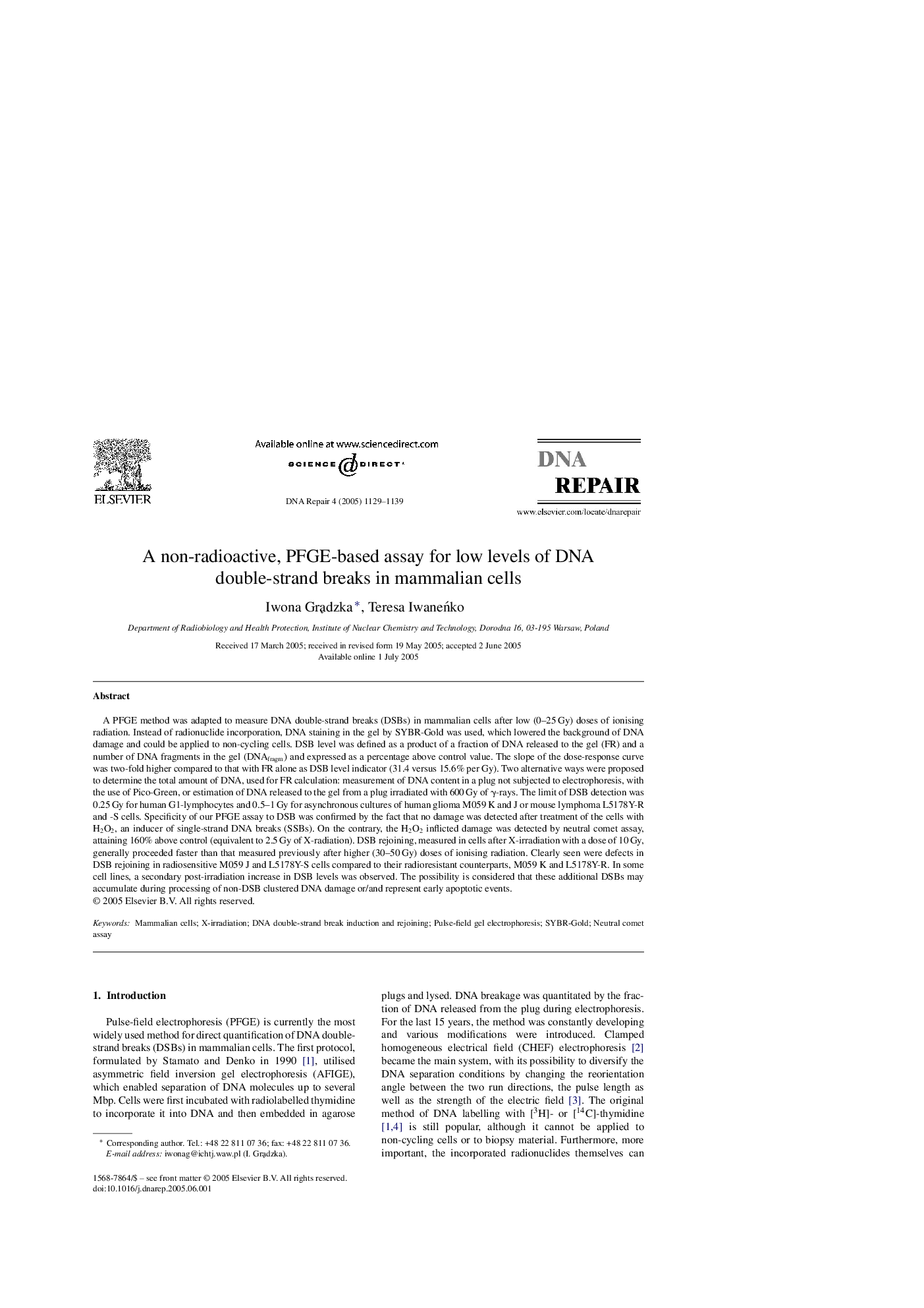| Article ID | Journal | Published Year | Pages | File Type |
|---|---|---|---|---|
| 10823591 | DNA Repair | 2005 | 11 Pages |
Abstract
A PFGE method was adapted to measure DNA double-strand breaks (DSBs) in mammalian cells after low (0-25 Gy) doses of ionising radiation. Instead of radionuclide incorporation, DNA staining in the gel by SYBR-Gold was used, which lowered the background of DNA damage and could be applied to non-cycling cells. DSB level was defined as a product of a fraction of DNA released to the gel (FR) and a number of DNA fragments in the gel (DNAfragm) and expressed as a percentage above control value. The slope of the dose-response curve was two-fold higher compared to that with FR alone as DSB level indicator (31.4 versus 15.6% per Gy). Two alternative ways were proposed to determine the total amount of DNA, used for FR calculation: measurement of DNA content in a plug not subjected to electrophoresis, with the use of Pico-Green, or estimation of DNA released to the gel from a plug irradiated with 600 Gy of γ-rays. The limit of DSB detection was 0.25 Gy for human G1-lymphocytes and 0.5-1 Gy for asynchronous cultures of human glioma M059 K and J or mouse lymphoma L5178Y-R and -S cells. Specificity of our PFGE assay to DSB was confirmed by the fact that no damage was detected after treatment of the cells with H2O2, an inducer of single-strand DNA breaks (SSBs). On the contrary, the H2O2 inflicted damage was detected by neutral comet assay, attaining 160% above control (equivalent to 2.5 Gy of X-radiation). DSB rejoining, measured in cells after X-irradiation with a dose of 10 Gy, generally proceeded faster than that measured previously after higher (30-50 Gy) doses of ionising radiation. Clearly seen were defects in DSB rejoining in radiosensitive M059 J and L5178Y-S cells compared to their radioresistant counterparts, M059 K and L5178Y-R. In some cell lines, a secondary post-irradiation increase in DSB levels was observed. The possibility is considered that these additional DSBs may accumulate during processing of non-DSB clustered DNA damage or/and represent early apoptotic events.
Related Topics
Life Sciences
Biochemistry, Genetics and Molecular Biology
Biochemistry
Authors
Iwona GrÄ
dzka, Teresa IwaneÅko,
